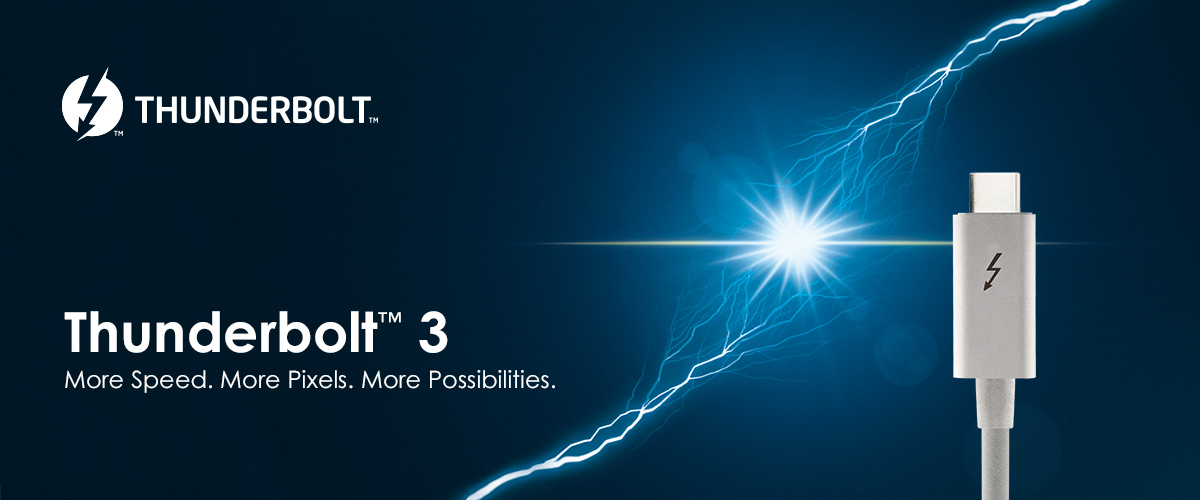
Intel is bringing a trio of brand new Thunderbolt 3 controllers for computers, code-named “Titan Ridge,” which offer DisplayPort 1.4 integration and basic USB-C peripheral compatibility.
According to the chip maker, which plans to loosen up licensing restrictions on Thunderbolt 3 and make the technology royalty-free in 2018, the new Titan Ridge chipsets support two DisplayPort 1.4 connections which lets them drive 8K displays at 30Hz without compression or at 60Hz when Display Stream Compression is used.
This will require a discrete GPU because integrated GPUs are limited to DisplayPort 1.2. The chip maker notes that total throughput is still limited to 40 gigabits per second.
As AppleInsider explains, this means that users won’t be able to connect two 5K monitors in a daisy-chain configuration. What you’ll be able to do, however, is daisy-chain an additional 4K monitor or daisy chain two Thunderbolt 3 monitors with 2560 x 1440 resolution at a 144Hz refresh rate, allowing easy set-up of two monitors.
Starting in 2018, Intel says, a number of leading monitor makers will bring single-cable monitors based on the new controller. Like with Apple’s Thunderbolt Display, these upcoming monitors will offer basic connectivity to Thunderbolt and USB devices while letting you charge a notebook directly from the monitor, eliminating the need for an additional power supply.
Aside from DisplayPort 1.4 compatibility, the new chipsets allow peripherals to fall back on USB 3.1 speeds if not connected to a Thunderbolt 3 host.
According to Intel:
The controller was specifically designed for Thunderbolt 3 monitor and enterprise dock makers who choose to offer basic compatibility when a Thunderbolt 3 monitor or dock is connected to a USB-C computer port.
To accomplish this, the controller integrates USB-C computer port compatibility so a Thunderbolt 3 monitor or dock can intelligently provide more performance and features when connected to a Thunderbolt 3 computer port, and basic compatibility when the Thunderbolt 3 monitor or dock is connected to a USB-C computer port.
In other words, a Thunderbolt 3 monitor could offer the highest resolution and refresh rate possible while simultaneously providing the most data bandwidth possible when the monitor is connected to a Thunderbolt 3 computer port.
However, when the same Thunderbolt 3 monitor is connected to the computer’s USB-C port, the monitor can offer basic compatibility depending on the video, data and power capabilities offered by the USB-C computer port.
“This mid-generation update for Thunderbolt 3 will allow the standard and devices using the new Titan Ridge controllers to catch up with current display standards and work better with the next generation of Ultra HD (4K) displays,” noted ArsTechnica.
Comprised of three controllers, one of them aimed at peripherals, the new Titan Ridge chipsets are backward-compatible with earlier Thunderbolt computers, cables and peripherals, as well as with Intel’s existing Thunderbolt 3 controllers (code-named “Alpine Ridge” and used in the 2016 and 2017 MacBook Pro models), and vice versa.
Apple is likely to refresh its Mac notebooks and computers with an integrated Titan Ridge Thunderbolt 3 controller later this year. Intel has not published pricing of the new Thunderbolt 3 chipsets, but intends to do so later in the quarter.